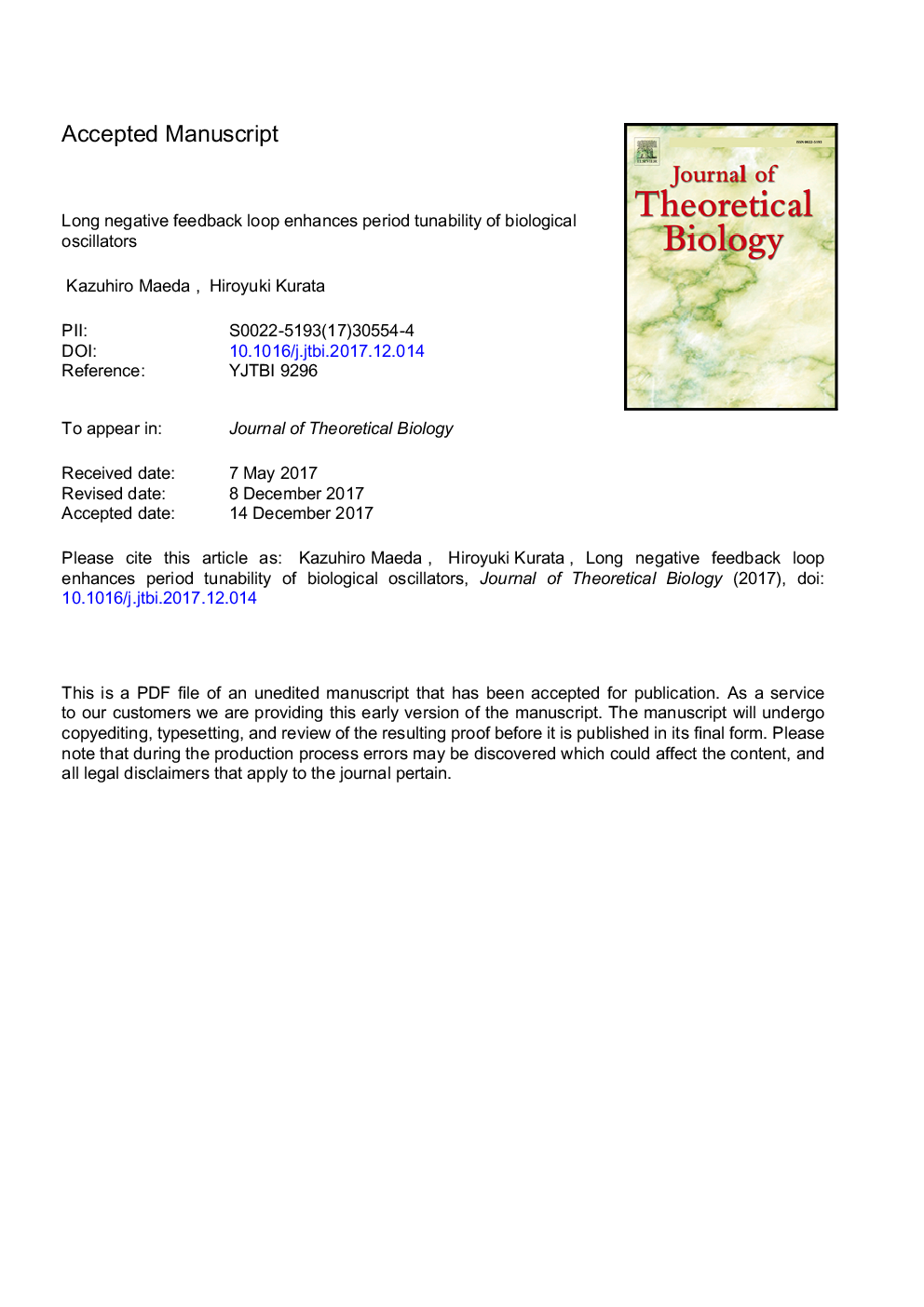| Article ID | Journal | Published Year | Pages | File Type |
|---|---|---|---|---|
| 8876842 | Journal of Theoretical Biology | 2018 | 35 Pages |
Abstract
Oscillatory phenomena play a major role in organisms. In some biological oscillations such as cell cycles and heartbeats, the period can be tuned without significant changes in the amplitude. This property is called (period) tunability, one of the prominent features of biological oscillations. However, how biological oscillators produce tunable oscillations remains largely unexplored. We tackle this question using computational experiments. It has been reported that positive-plus-negative feedback oscillators produce tunable oscillations through the hysteresis-based mechanism. First, in this study, we confirmed that positive-plus-negative feedback oscillators generate tunable oscillations. Second, we found that tunability is positively correlated with the dynamic range of oscillations. Third, we showed that long negative feedback oscillators without any additional positive feedback loops can produce tunable oscillations. Finally, we computationally demonstrated that by lengthening the negative feedback loop, the Repressilator, known as a non-tunable synthetic gene oscillator, can be converted into a tunable oscillator. This work provides synthetic biologists with clues to design tunable gene oscillators.
Keywords
Related Topics
Life Sciences
Agricultural and Biological Sciences
Agricultural and Biological Sciences (General)
Authors
Kazuhiro Maeda, Hiroyuki Kurata,
